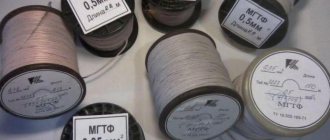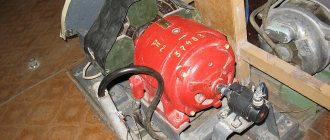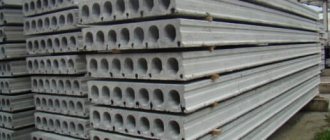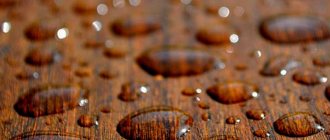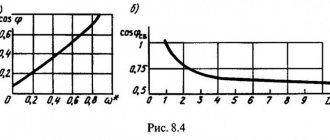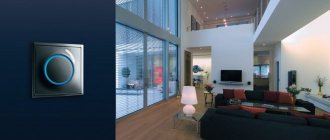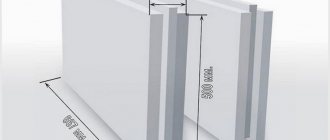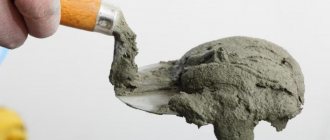What is slate?
Slate (“Schiefer” in German) is a roofing building material in the form of corrugated or flat sheets made from asbestos-cement mixture. The proportion of asbestos in it is 10–18 percent, the rest is Portland cement and water. In production, asbestos fibers are first fluffed and then mixed with other components. Next, a long sheet is formed from the resulting mixture, vacuumed and profiled, and then cut into sheets of the required dimensions and weight.
Flat and wave
In Russia, chrysolite asbestos is used to make slate. Imported roofing products can be produced using its analogue, amphibole asbestos. Both of these silicate minerals belong to the group of carcinogens.
But peridot fibers, after being bound with cement in a sheet of wave or flat material, are no longer a dangerous material. But amphibole, even after pressing and hardening in Portland cement mortar, remains a carcinogenic substance. No wonder it is gradually being banned around the world.
At Russian enterprises, it is manufactured for the most part according to GOSTs 30340-95 and 18124-95, which specify the standard sheet dimensions, number of waves and weight. According to the standards, its color should be gray. If asbestos-cement sheets have a different color, then they are painted or the pigment is added directly to the cement mixture. In the second case, the product is marked according to the factory specifications; GOST does not provide for the introduction of pigment additives.
Slate presented on the market: sizes, range of materials
If everything is clear with flat-format sheet building materials, then the classic size of a slate sheet is determined by its wave segments. Today on the market there are options for 6, 7 and 8 wave building materials. The parameters of each product can be guided according to GOST 30340-95. All dimensions are presented in the table.
| Product type | Length and width, mm | Thickness, mm | Wave pitch (bending), cm | Product weight, kg |
| Flat format | 2500×1200 3000×1200 3000×1500 3600×1200 3600×1500 | 6/8/10 | — | 38-115 |
| Six-wave | 1750×1125 | 6/7,5 | 20 | 25/35 |
| Seven-wave | 1750×980 | 5,2/5,8 | 15 | 18-23 |
| Eight wave | 1750×1130 | 5/5,2/5,8 | 15 | 20/20,6/26 |
Important! Given the actual dimensions of the slate, it has working boundaries. Since the building material is laid with an overlap, when covering a certain area, it is necessary to make a 15-20% supply of building material, increasing the amount of purchased slate to compensate for the loss of the overlapped part.
We should also talk about a type of sheet product with 5 bends. The so-called European profile began to be used only recently. Its dimensions are identical to the eight-wave product: 1750×1130×5.8 mm. The geometry of the sheet product in this case is changed - the bends are replaced by flat-shaped depressions, and therefore such an indicator as wave height is also important. It is produced in accordance with production standard 30340-2012.
It is worth noting that the production of wave slate can also be carried out according to individual customer orders. In this case, it differs from regulated products.
Slate: its type, size and weight
There are four main types of asbestos-cement roofing sheets:
- Flat
- 6-wave
- 7-wave
- 8-wave
Flat products are used in the construction of partitions and roofs, while wave products are used exclusively for roofing material. Their production technology and composition are the same; they differ only in the cross-sectional profile.
Flat slate sheets
The GOST size of flat slate in millimeters is slabs 2500x1200, 3000x1200, 3000x1500, 3600x1200 and 3600x1500. Their typical thickness is 6, 8 and 10 mm. The weight of such asbestos-cement sheet ranges from 38 to 115 kg.
The wave material according to GOST is manufactured in two versions, indicating “40/150” or “54/200” in the markings. The first of the numbers in front of the scythe indicates the height of the waves in millimeters, and the second - their pitch. All such asbestos-cement sheets have a length of 1750 mm. This is the general standard. The size parameters differ only in the number of sizes, thickness and width.
The 6-wave version belongs to the second category “54/200” and is available with a thickness of 6 or 7.5 mm. Accordingly, the weight of this wavy sheet is 26 or 35 kg. And the width in both cases is 1125 mm.
Dimensions of 6-wave sheet
The 7-wave product has a “40/150” profile. Its thickness is 5.8 mm. The width of this asbestos-cement sheet is 980 mm. And the weight of slate with seven waves in cross-section is 23.2 kg.
The 8-wave sheet also falls into the “40/150” category. The size of this type of material in width and thickness is 1130x5.8 mm. The weight of a sheet of eight-wave asbestos cement product is 26.1 kg.
Sizes 7 and 8 wave sheet
In addition to the GOST format, slate is also produced according to factory specifications. Here the dimensions of the sheets are very different. Each enterprise now independently decides which product will be more competitive on the market.
The more precipitation falls on the roof, the thicker the wave slate should be purchased for it. When installing it yourself, it is easiest to work with the seven-wave elements of this roofing covering. These sheets are the smallest in size and have the least weight among analogues.
Knowing how much a particular brand weighs, you can easily calculate the total weight of the package to organize the transportation of this building material. A minimum of two workers are required to lift the material onto the roof. It is difficult to lift heavy sheets of corrugated or flat products alone and is not recommended. If you have to work alone, then it is better to look for another building material for roof cladding. The weight and size of the ondulin sheet in this case will be more handy.
Slate size chart
| View | Length | Width | Thickness | Wave step | Weight | Price from |
| 6-wave | 1750 mm | 1125 mm | 6/7.5 mm | 20 cm | 25/35 kg | 200 rub. |
| 7-wave | 1750 mm | 980 mm | 5.2/5.8 mm | 15 cm | 18-23 kg | 120 rub. |
| 8-wave | 1750 mm | 1130 mm | 5/5.2/5.8 mm | 15 cm | 20/20.6/26 kg | 200 rub. |
When calculating the amount of material in question required for a roof, you should focus not on its general dimensions in the markings, but on the working ones. Each sheet of wave sheet is superimposed on the previous one with an overlapping offset. Therefore, cutting and displacement will require about 15–20% of the area of the roof to be covered.
The wave on one edge of the slate sheet is overlapping, and on the other - overlapping. The height of the first is always a few millimeters lower than the second, so that the roof sheathing lies flat during installation without distortion.
It is best to choose asbestos-cement roofing material that is unpainted and standard gray. Pigments added to the composition during production slightly reduce the strength characteristics of the product. It is more practical to then paint the already covered roof in the desired color.
Protective painting increases the service life and improves the overall appearance of the slate covering. The first layer of paint is applied to asbestos cement sheets before installation. Then, after the roof sheathing is completed, they are covered again.
Slate Sheet Size 6, 7, 8 wave
There are four main types of asbestos-cement roofing sheets:
- Flat;
- 6-wave;
- 7-wave;
- 8-wave.
Flat products are used in the construction of partitions and roofs, while wave products are used exclusively for roofing material. Their production technology and composition are the same; they differ only in the cross-sectional profile.
The GOST size of flat slate in millimeters is slabs 2500x1200, 3000x1200, 3000x1500, 3600x1200 and 3600x1500. Their typical thickness is 6, 8 and 10 mm. The weight of such asbestos-cement sheet ranges from 38 to 115 kg.
Table of sizes of 6, 7, 8 mm slate and its price:
| View | Length | Width | Thickness | Wave step | Weight | Price from |
| 6-wave | 1750 mm | 1125 mm | 6/7.5 mm | 20 cm | 25/35 kg | 300 rub. |
| 7-wave | 1750 mm | 980 mm | 5.2/5.8 mm | 15 cm | 18-23 kg | 180 rub. |
| 8-wave | 1750 mm | 1130 mm | 5/5.2/5.8 mm | 15 cm | 20/20.6/26 kg | 300 rub. |
When calculating the amount of material in question required for a roof, you should focus not on its general dimensions in the markings, but on the working ones. Each sheet of wave sheet is superimposed on the previous one with an overlapping offset. Therefore, cutting and displacement will require about 15–20% of the area of the roof to be covered.
Advantages and disadvantages of wave slate
Among the advantages of asbestos cement material:
- Low heat transfer of roofing material;
- Non-flammability and good electrical insulation parameters;
- Possibility of painting in any color you like;
- Increased moisture resistance;
- Good sound insulation;
- No need for constant maintenance;
- Frost resistance and service life of 30–50 years.
On a sunny day, a metal tile roof will heat up much faster and stronger than an asbestos-cement roof. If holes appear in the latter, as part of the repair, it will be enough to replace only the damaged element. True, the size of the slate is such that the sheet will have to be changed completely. But due to its good strength characteristics, for installation it only needs a sheathing made of boards or bars with a pitch of 45–60 cm.
There are only four disadvantages:
- Heavy weight;
- Fragility to fracture;
- Low strength under strong point impacts;
- Susceptibility to moss growth.
The porosity of the material is conducive to moss germination
Transportation and installation of corrugated slate sheets should be carried out with the utmost care. And to solve problems with moss you will need a primer or paint.
Asbestos cement sheets are quite fragile
Types and technical characteristics
Asbestos cement sheets can be flat or wavy , flat materials are divided into pressed and non-pressed, and types of profiled sheets differ in the number of waves.
Pressing asbestos-cement sheets increases the technical characteristics of the material. Pressed flat sheets are additionally compacted during production, which increases their density, weight, bending strength and frost resistance.
| Asbestos cement sheets: characteristics | Pressed sheet | Unpressed |
| Bending strength, MPa | 23 | 18 |
| Thickness, mm | 3600, 3000 and 1200 | 3600, 3000 and 1200 |
| Width, mm | 1500 and 1200 | 1200 and 1500 |
| Thickness, mm | 6, 7, 8 and 10 | 6, 7, 8 and 10 |
| Density, g/cm3 | 1.75 and 1.8 | 1.6 and 1.7 |
| Number of defrost and defrost cycles | 50 | 25 |
As can be seen from the table, the dimensions of pressed and unpressed sheets are identical , the materials differ in the characteristics of density, strength and durability.
Flat sheets are not used for arranging pitched roofs , since their installation is complicated by the need to properly arrange and strengthen the overlaps. Asbestos-cement corrugated slabs are widely used in this area. 5-, 6-, 7- and 8-wave varieties of profiled asbestos-cement slate are available.
Flat pressed asbestos cement sheet GOST 18124 95
The most common are 7- and 8-wave varieties. The dimensions of the asbestos-cement corrugated sheet differ from each other in width : for a 7-wave sheet it is 980 mm, for an 8-wave sheet it is 1130 mm. The remaining parameters are almost identical.
Asbestos cement sheet dimensions:
- Length: 1750 mm.
- Thickness: 5.8 mm.
- Bending strength: 16 MPa.
- Density: 1.6 g/cm3.
- Number of freezing cycles: 25.
- Weight: 26.1 kilograms according to GOST, weight of asbestos-cement sheet per m2 - 10.47 kg.
NOTE!
The characteristics of the length, width and thickness of the sheet may vary slightly depending on the manufacturer , since the above represents only the universal requirements of state standards.
